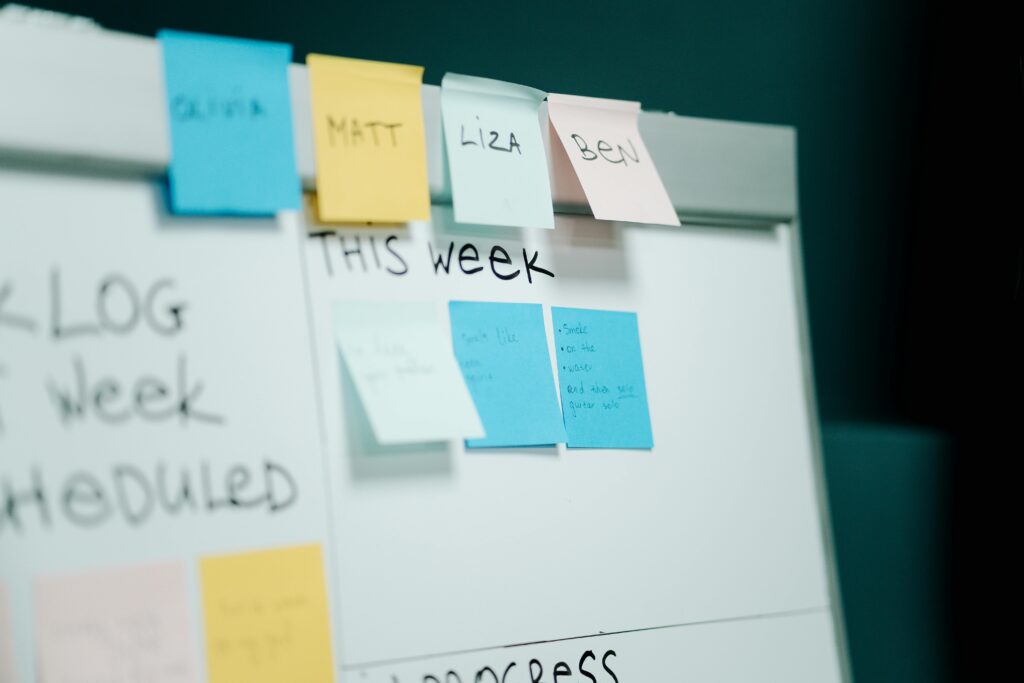How do you keep teams learning when no one works the same schedule, shares the same office, or even speaks the same language? As businesses grow more distributed and dynamic, training has to do more than just check the compliance box. It needs to align people, build skills, and adapt as quickly as the work does. But most traditional training models weren’t built for this level of complexity.
That’s where synchronous and asynchronous learning come in: two distinct, yet complementary, approaches that can make learning both scalable and effective. In this article, Sereda.ai examines what each model offers, how they fit into modern corporate training, and how to select the optimal mix for your team.

What is Synchronous Learning?
Synchronous learning is any training that happens in real time. It brings participants together—either in person or online—for a shared session where everyone learns simultaneously. This format allows for direct interaction, real-time feedback, and active discussion, which makes it especially useful when clarity, collaboration, or alignment is critical.
When to use it
Synchronous learning is most effective when the learning experience benefits from live exchange and group dynamics. Common use cases include:
- Live workshops and coaching: deal for leadership development, soft skills, and change management—where discussion and reflection drive deeper learning.
- New hire onboarding: A live welcome session sets the tone, introduces culture, and gives new employees a chance to ask questions and feel part of the team from day one.
- Product or systems training: Useful for complex tools or workflows that need demonstrations and live Q&A to reduce misunderstandings and speed up adoption.
- Strategic alignment sessions: When rolling out major changes or initiatives, real-time sessions help teams understand not just the “what,” but the “why” behind decisions.
Synchronous formats work best when the human element—dialogue, feedback, and shared momentum—is key to making the training stick.
What is Asynchronous Learning?
Asynchronous learning happens on the learner’s schedule. Content such as videos, modules, or documents is accessed independently, without the need for live sessions or fixed times.
It’s a flexible, scalable format that works especially well for global teams or roles with varying schedules. Everyone gets the same content, but on their own terms.
When to use it
Asynchronous learning is ideal when consistency and self-paced access are key. Common use cases include:
- Compliance and policy training: Ideal for delivering consistent, trackable training across large teams without the need for scheduling.
- Product tutorials and feature updates: Recorded content ensures accuracy, reduces repeated explanations, and gives employees a point of reference.
- Knowledge libraries and onboarding guides: Help new and existing employees find answers on demand and revisit key information as needed.
- Microlearning: Bite-sized lessons integrated into the workday make it easier to build skills continuously without pulling teams out of their flow.
This format is especially valuable when scale, autonomy, and retention matter most.
How Does It Fit Into Corporate Training?
Synchronous and asynchronous formats aren’t competing choices—they’re complementary tools. Each serves a different function, and together, they create a more agile, inclusive, and efficient learning environment.
In practice, combining both allows companies to:
- Standardize at scale, personalize at the point of need: Use asynchronous content to deliver core knowledge consistently. Layer in live sessions when deeper discussion or coaching is needed.
- Train across time zones without friction: Asynchronous formats remove scheduling barriers. Synchronous touchpoints can be timed more intentionally when alignment or interaction is critical.
- Use resources more effectively: Not every topic requires a live session. Prioritize real-time learning for leadership, collaboration, or change initiatives where it adds the most value.
- Build continuous learning into everyday work: On-demand content supports self-paced growth, while live discussions help apply it, challenge assumptions, and create shared accountability.
By designing training systems that flex between formats, companies can meet diverse learner needs without sacrificing consistency or momentum.
Read: Interactive Learning: What Training Should’ve Been All Along
The Key System Behind Corporate Learning
At the center of any effective training program is the Learning Management System (LMS). It’s more than a content library—it’s the engine that delivers, organizes, and tracks learning across the organization.
A good LMS supports different learning formats, adapts to team structures, and gives leaders visibility into progress and performance. Whether you’re onboarding new hires or rolling out strategic initiatives, it’s the system that keeps learning consistent and scalable.
Next, let’s look at how an LMS should support both synchronous and asynchronous learning.
LMS in the Context of Synchronous and Asynchronous Learning
As training programs evolve, so do the expectations for the systems that support them. A modern LMS must do more than host content—it should coordinate, deliver, and monitor learning across both synchronous and asynchronous formats in a unified, efficient way.
To enable this, the LMS needs to handle different types of content, formats, and user experiences without creating complexity. Here’s a breakdown of what to look for:
| Asynchronous Learning | Synchronous Learning |
| Uploads of videos, SCORM packages, documents, quizzes | Integration with Zoom, Teams, or other live platforms |
| Modular course structure and self-paced navigation | Built-in scheduling tools and automated calendar invites |
| Progress tracking and automated assessments | Attendance tracking and session summaries |
| Personalized learning paths by role or level | Access to session recordings and resources |
| Multi-language support for global rollout | Feedback tools and polls for real-time insights |
Beyond managing content, the LMS should provide centralized reporting, capturing learning activity across both live and self-paced sessions. This allows companies to track engagement, identify gaps, and continuously optimize training based on data, not assumptions.
The right platform turns blended learning from a manual juggling act into a streamlined, insight-driven system.
Read: Why LMS Is Key to Corporate Learning That Fits Every Generation
Choosing an LMS
Not all LMS platforms are created equal—and choosing the wrong one can lead to poor adoption, fragmented learning, and wasted time.
Here’s how to evaluate options through a strategic lens:
- Start with your learning strategy: Define what you need to deliver and how your teams prefer to learn. The LMS should align with your actual training goals, not just offer a long feature list.
- Prioritize ease of use: A powerful platform means little if it’s clunky. Choose an LMS that’s intuitive for both learners and admins, with minimal onboarding time.
- Check for integration flexibility: The LMS should connect seamlessly with your existing tools—HRIS, calendar apps, communication platforms—to streamline workflows, not create new ones.
- Look for unified data and reporting: A good LMS offers a clear view of learner progress across formats, teams, and locations. Insights should be actionable, not buried in dashboards.
- Plan for scale: Make sure the platform can grow with you—whether you’re expanding teams, adding languages, or increasing content volume.
A platform like Sereda Learning is built on these principles, combining usability, flexibility, and scale. It’s a strong example of how modern LMS tools are evolving to meet the real demands of corporate learning today.

Conclusion
Synchronous and asynchronous learning are not opposing choices—they’re two sides of an effective training strategy. One brings energy, interaction, and feedback. The other offers scale, flexibility, and consistency. Together, they help companies train faster, smarter, and in ways that stick.
With the right LMS in place, organizations can make this dual approach easy to manage, personalize at scale, and measure across the board. Ready to explore how a blended learning model could work for your team? Book a quick demo with Sereda.ai and see what’s possible.